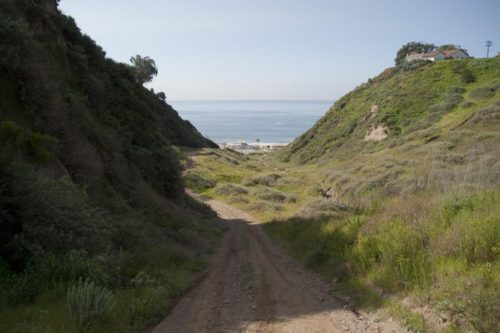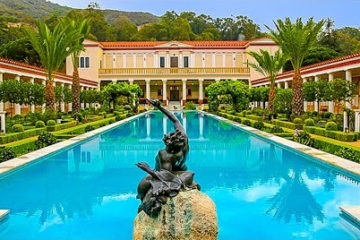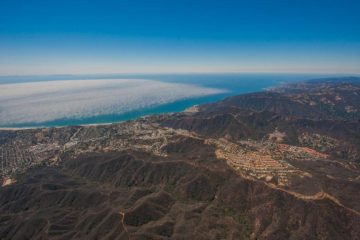Potrero Canyon

This enormous project was initiated more than 20
years ago, after landslides caused several rim homes to slide
into the Canyon, resulting in a plan by the City to buttress the
Canyon walls by filling in the Canyon floor. An Environmental
Impact Report was issued in 1985, and after several years City
officials and the entire community, led by PPRA and its then-
sister organization, Potrero Canyon Association, came together
in the early 1990s and reached a consensus as to the parameters
for the Canyon’s development. Hallmarks of this community-
wide agreement included provisions for a riparian zone in the
middle of the Canyon with a trail running between the north
and south ends; restrictions on the type, amount and manner
of fill; and limitations on allowable recreation to “passive”
activities such as hiking and vista-viewing. The Coastal
Commission permit issued in 1993, which now governs the
project, incorporates the consensus agreement.
Phase I of the project, fill and grading, commenced
when the permit was issued and was almost completed when
funding ran out. During this time an outside firm hired by
the City and paid for by taxpayers prepared initial drawings
for a development plan of the Canyon, in accordance with the
Coastal Commission permit. City officials discontinued work
on this plan when funding was no longer available. The expense
of this behemoth project, originally projected to cost taxpayers
about $2 million, has increased more than ten-fold. Additional
work is required to complete Phase I, including more extensive
fill at the mouth of the Canyon than what was originally
contemplated, due to recent slippage of homes located along
the southeast rim. Phase II, actual development of the park
within the Canyon, has not yet begun. It is anticipated that
certain lots owned by the City along the Canyon rim will be
sold in the near future in order to raise funds to complete the
project.
In 2004 the retiring District 11 Councilperson appointed
a Citizen’s Advisory Committee, comprised of Palisades
residents, to provide recommendations for the future of the
Canyon. One of its members is PPRA board member Chris
Spitz. Early on, the “Recreation Subcomittee” developed
another working map for future Canyon development. This
plan substantially varies from the initial drawings prepared
by the firm previously hired by the City and, of particular
concern to PPRA, appears to deviate in many respects from
the provisions of the controlling Coastal Commission permit.
To date, no recommendations have been made to the City in
regard to eventual development and use of the Canyon, and
discussion about the many proposals is ongoing.
PPRA’s position on general development of the Canyon,
which it has communicated in writing to the Advisory
Committee as well as to Councilman Bill Rosendahl, is that
the Coastal Commission permit provisions are controlling
and must be adhered to in any recommendations for Canyon
development, in particular, preservation of the required
riparian zone and limitation on recreation to passive activities.
Extensive public comments at Advisory Committee meetings in
the past several months have made it clear that the community
overwhelmingly desires, as does PPRA, that any proposals for
Canyon development 1) protect the riparian zone and 2) limit
recreational activities to those that are passive only.

